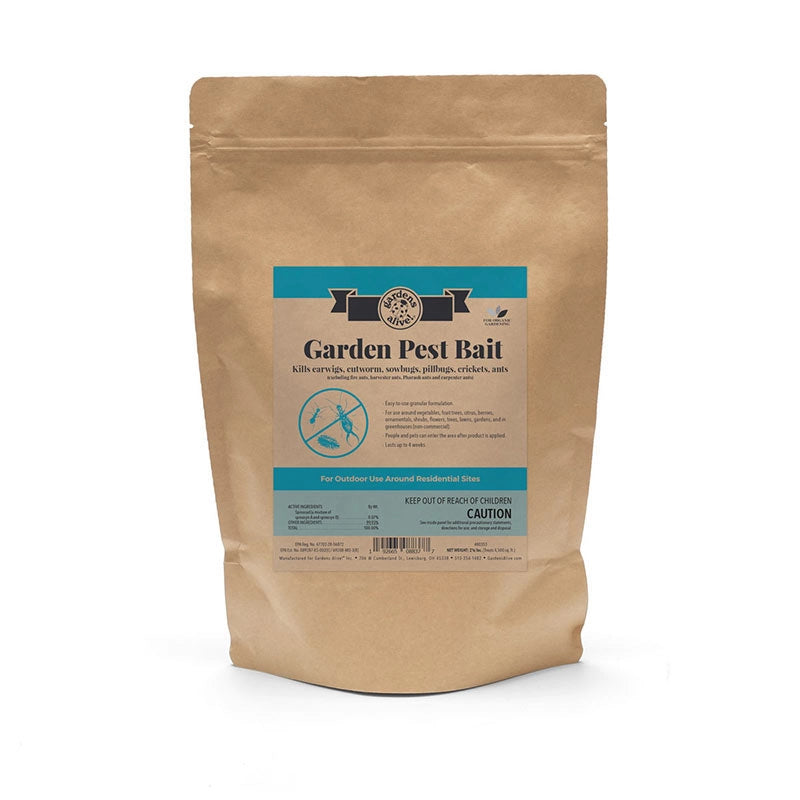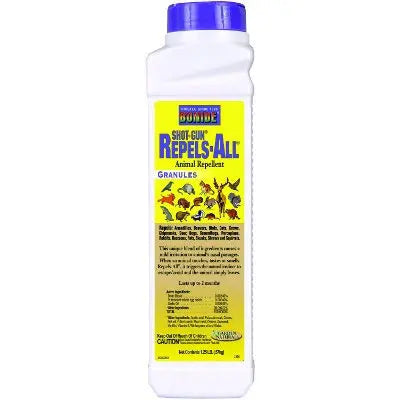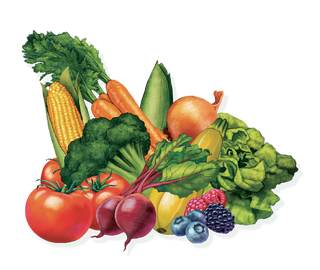What's eating my buds?
Q. Sean in Columbus Ohio writes: "I have several flower beds in my backyard with various perennials. For some unknown reason a daisy and poppy which are next to each other are having their buds broken off prematurely. Some are removed just below the bud while others are mid-stem.
There are several evil squirrels around🐿️, and I have seen one wandering into that section. But I am less certain it's the culprit as it hasn't destroyed any other plants.....yet.
Might the guilty party be some sort of insect? If so, would neem oil be effective? I stumbled upon that suggestion after a desperate google search. I appreciate your show, learn something every time I listen, and I'm hoping you have a miracle remedy.
A. There is a creature called the bud worm that eats flowers, but not as cleanly as you describe. Like all agricultural pests with the word 'worm' in their name, they are caterpillars, not worms of any kind. Early farmers called them worms because the ones damaging the plants in their corn field looked a little bit like worms, and the name stuck to the point that entomologists gave up and adopted 'worm' as their common name instead of caterpillar, because otherwise the farmers wouldn't know what they were talking about.
{This happens a lot. Lightning bugs, aka fireflies, are neither true bugs nor flies, but beetles, which is why their scientifically accepted name is 'ladybird beetle'.}
Anyway, there are many kinds of budworms, but the majority are pests of agricultural crops like pecans and corn. But there is one that eats the petals of sunflowers. The national sunflower association suggests you look for their frass (a fancy word for bug poop) near the entrance hole they have created. The timing is right for them to be causing damage around now, but I doubt they're the problem. Just to be safe, be sure to check the stems of affected flowers and see if there's a 'worm' inside. Then squish it.
Note: the website of Arbico Organics, suppliers of many kinds of organic and natural pest control products, has informative and disgusting images of several different budworms and other destructive caterpillar species. If you find any such 'worms' on your plants, use the old original form of Bt, which only affects caterpillars and nothing else.
A concentrated form of a naturally occurring soil organism, Bt has been used for over a century to control pest caterpillars, and I consider it to be the oldest organic pest control product offered for retail sale. Farmers and gardeners spray the product on the leaves of their plants under attack, the caterpillars ingest the Bt when they munch on those sprayed leaves and the caterpillar ceases to be able to eat and soon dies.
Warning; do not use Bt on tomato and tobacco hornworms if those massive caterpillars' backs are adorned with lots of little white spikey things. These cocoons contain the larval stage of predatory wasps so small we can barely see them and they are feeding on the insides of those unlucky caterpillars.
Some other guesses I found on the internet when this question came up included Japanese beetles and slugs. But the beetles would also skeletonize the leaves, and you'd see lots of them flying around, as they do their damage during the day. Slugs and snails are a good possibility, as they like to eat flower buds and work the night shift. To see if it is slugs, crack open a beer at sunset and pour it into little saucers or cat food cans stationed around the affected plants and check them in the morning. You'll either find containers full of dead drunken slugs or have wasted a perfectly good can of beer.
But my suspicions lean more towards the animal world. It could be rabbits if the damage is confined to the lower parts of the plants, but they would be eating leaves and small branches as well.
Deer could well be the culprits, but the damage would begin two to three feet above the ground, which is their 'browsing height'. And they would eat everything--flowers, Leaves, stalks, your vinyl siding...
That leaves us with evil squirrels, who delight in eating flower heads and buds and often leave the rest of the plant alone. Luckily, Sean created a repellant recipe that has the power to deter all these pests, especially evil squirrels.
About a week after he emailed his question, he wrote back saying: "I made a concoction with cayenne powder, garlic and water. I spray it on the plants early in the afternoon. It seems to be working, hopefully. But I wonder why only the daisies and poppies were targeted? I have many perennials."
That's one of the better home-made sprays I've heard about, Sean. Garlic is well recognized as a prime insect repellant, and neither evil squirrels, deer, nor rabbits will take more than one bite of a pepper-sprayed plant. The only change I will suggest is that you spray in the early morning and evening, not during the heat of the day, when your ingredients could lose some of their effectiveness.
As to the pest's dining preferences, I can only suggest that your poppies and daisies just taste better than your other plants.
There are several evil squirrels around🐿️, and I have seen one wandering into that section. But I am less certain it's the culprit as it hasn't destroyed any other plants.....yet.
Might the guilty party be some sort of insect? If so, would neem oil be effective? I stumbled upon that suggestion after a desperate google search. I appreciate your show, learn something every time I listen, and I'm hoping you have a miracle remedy.
A. There is a creature called the bud worm that eats flowers, but not as cleanly as you describe. Like all agricultural pests with the word 'worm' in their name, they are caterpillars, not worms of any kind. Early farmers called them worms because the ones damaging the plants in their corn field looked a little bit like worms, and the name stuck to the point that entomologists gave up and adopted 'worm' as their common name instead of caterpillar, because otherwise the farmers wouldn't know what they were talking about.
{This happens a lot. Lightning bugs, aka fireflies, are neither true bugs nor flies, but beetles, which is why their scientifically accepted name is 'ladybird beetle'.}
Anyway, there are many kinds of budworms, but the majority are pests of agricultural crops like pecans and corn. But there is one that eats the petals of sunflowers. The national sunflower association suggests you look for their frass (a fancy word for bug poop) near the entrance hole they have created. The timing is right for them to be causing damage around now, but I doubt they're the problem. Just to be safe, be sure to check the stems of affected flowers and see if there's a 'worm' inside. Then squish it.
Note: the website of Arbico Organics, suppliers of many kinds of organic and natural pest control products, has informative and disgusting images of several different budworms and other destructive caterpillar species. If you find any such 'worms' on your plants, use the old original form of Bt, which only affects caterpillars and nothing else.
A concentrated form of a naturally occurring soil organism, Bt has been used for over a century to control pest caterpillars, and I consider it to be the oldest organic pest control product offered for retail sale. Farmers and gardeners spray the product on the leaves of their plants under attack, the caterpillars ingest the Bt when they munch on those sprayed leaves and the caterpillar ceases to be able to eat and soon dies.
Warning; do not use Bt on tomato and tobacco hornworms if those massive caterpillars' backs are adorned with lots of little white spikey things. These cocoons contain the larval stage of predatory wasps so small we can barely see them and they are feeding on the insides of those unlucky caterpillars.
Some other guesses I found on the internet when this question came up included Japanese beetles and slugs. But the beetles would also skeletonize the leaves, and you'd see lots of them flying around, as they do their damage during the day. Slugs and snails are a good possibility, as they like to eat flower buds and work the night shift. To see if it is slugs, crack open a beer at sunset and pour it into little saucers or cat food cans stationed around the affected plants and check them in the morning. You'll either find containers full of dead drunken slugs or have wasted a perfectly good can of beer.
But my suspicions lean more towards the animal world. It could be rabbits if the damage is confined to the lower parts of the plants, but they would be eating leaves and small branches as well.
Deer could well be the culprits, but the damage would begin two to three feet above the ground, which is their 'browsing height'. And they would eat everything--flowers, Leaves, stalks, your vinyl siding...
That leaves us with evil squirrels, who delight in eating flower heads and buds and often leave the rest of the plant alone. Luckily, Sean created a repellant recipe that has the power to deter all these pests, especially evil squirrels.
About a week after he emailed his question, he wrote back saying: "I made a concoction with cayenne powder, garlic and water. I spray it on the plants early in the afternoon. It seems to be working, hopefully. But I wonder why only the daisies and poppies were targeted? I have many perennials."
That's one of the better home-made sprays I've heard about, Sean. Garlic is well recognized as a prime insect repellant, and neither evil squirrels, deer, nor rabbits will take more than one bite of a pepper-sprayed plant. The only change I will suggest is that you spray in the early morning and evening, not during the heat of the day, when your ingredients could lose some of their effectiveness.
As to the pest's dining preferences, I can only suggest that your poppies and daisies just taste better than your other plants.



